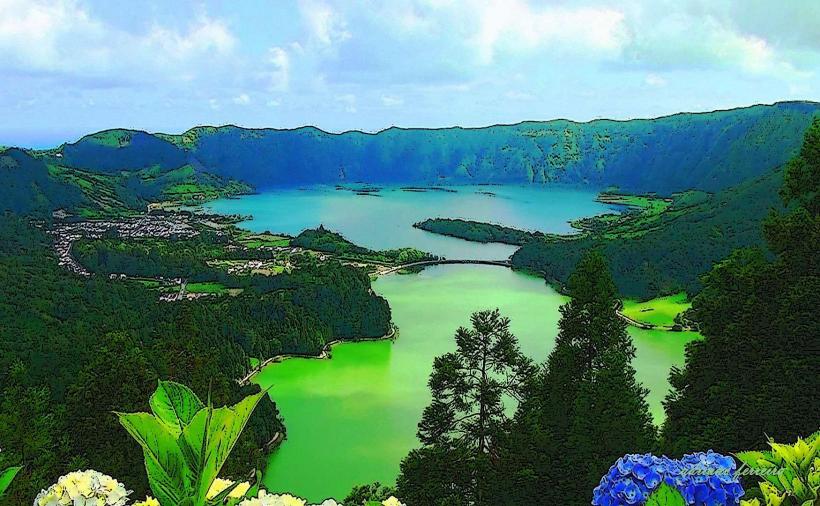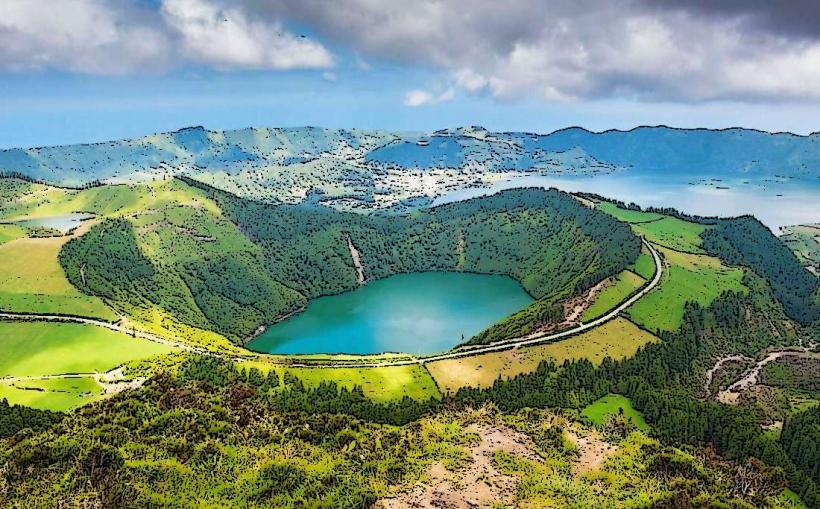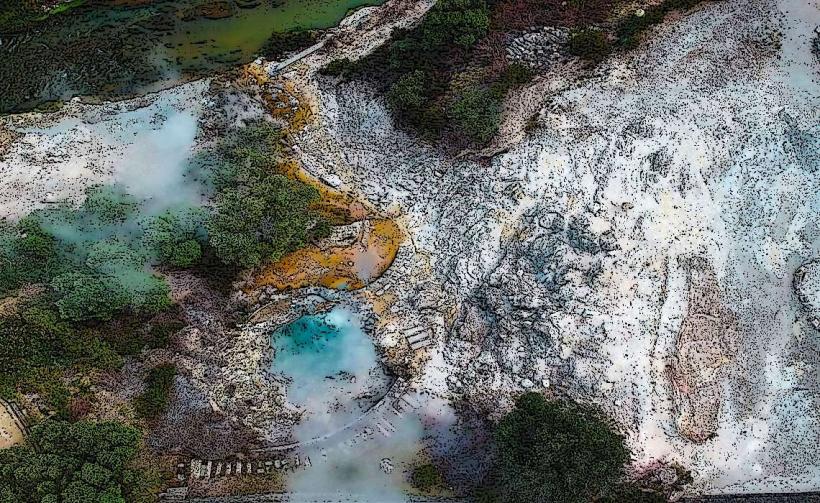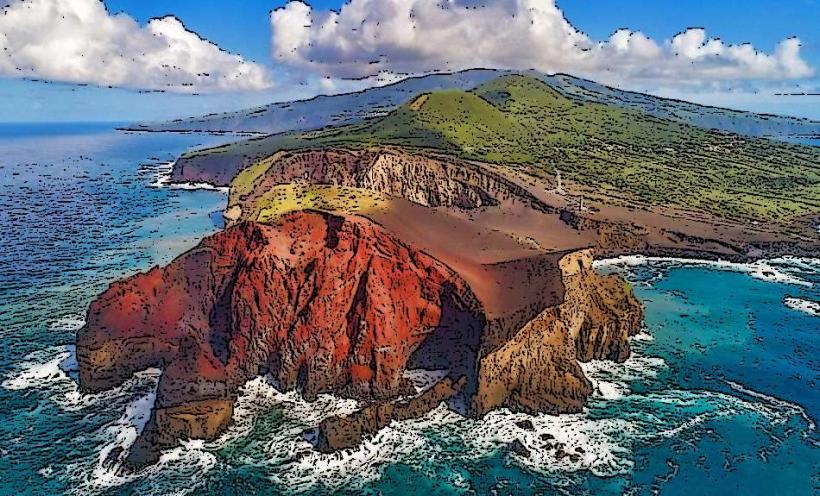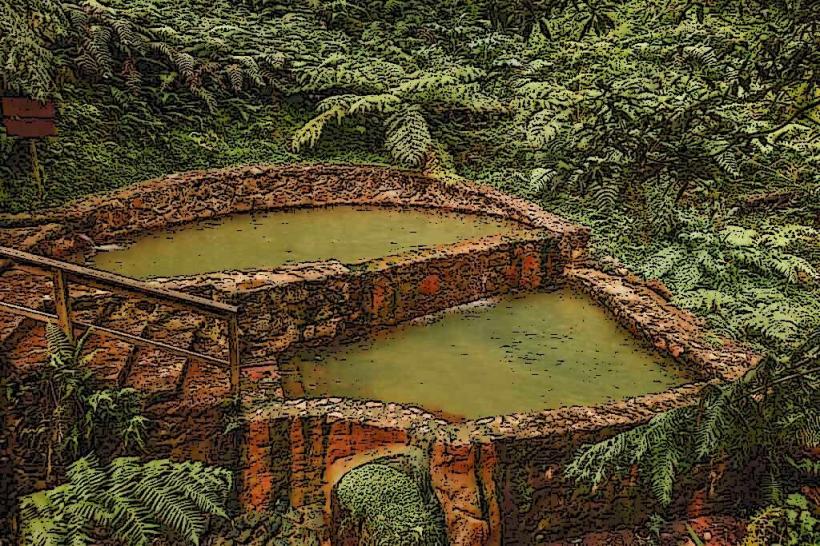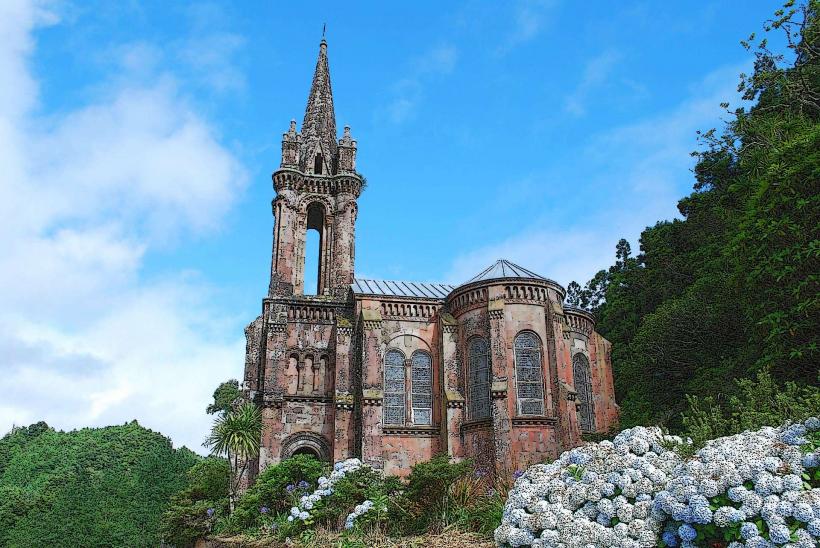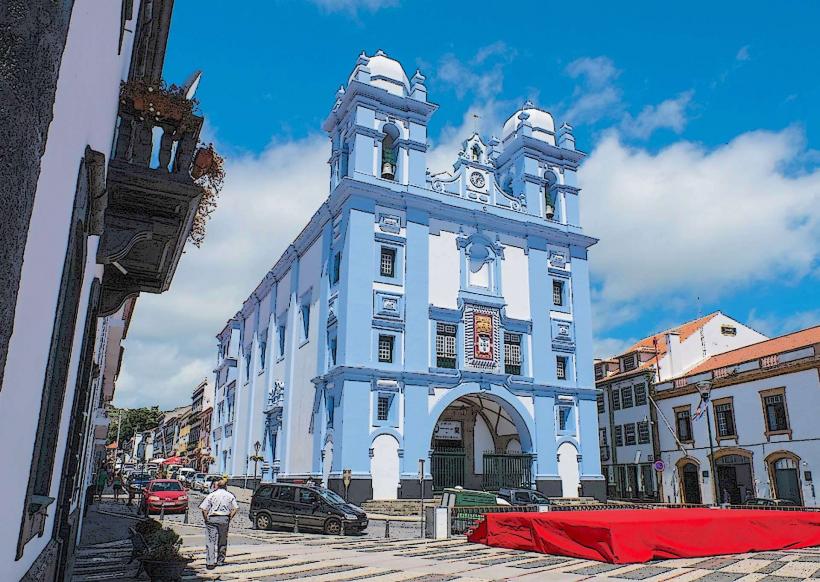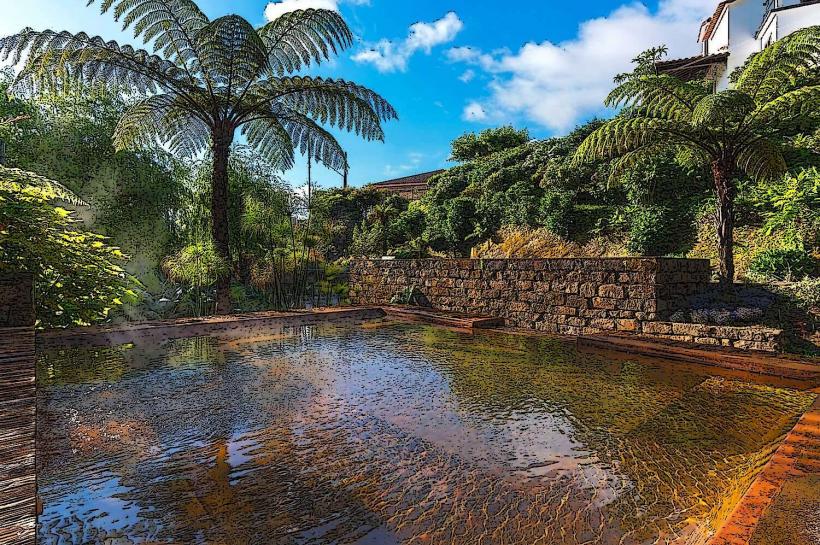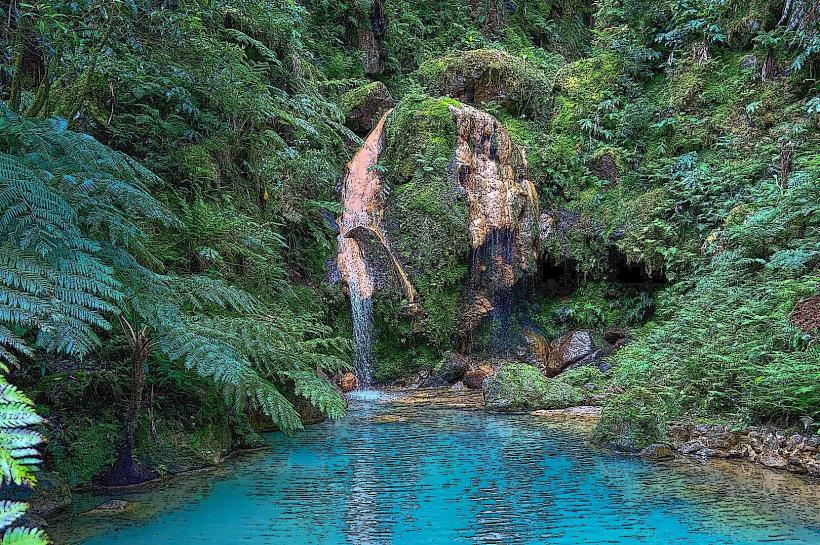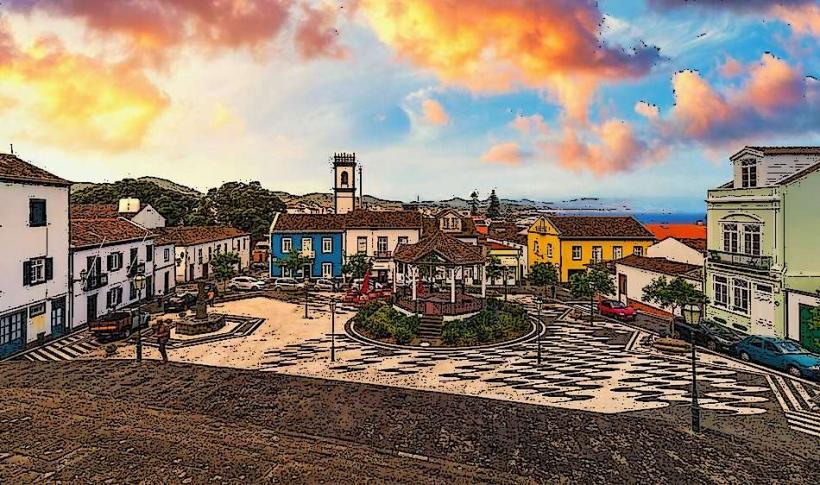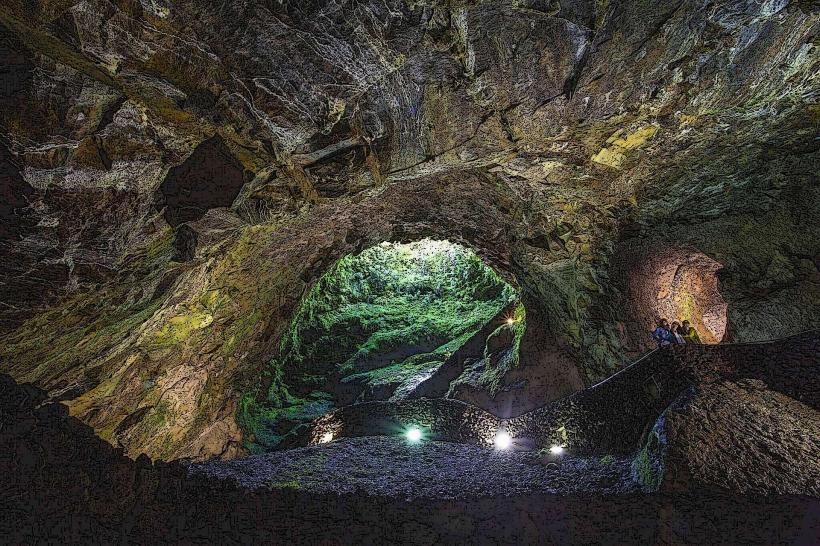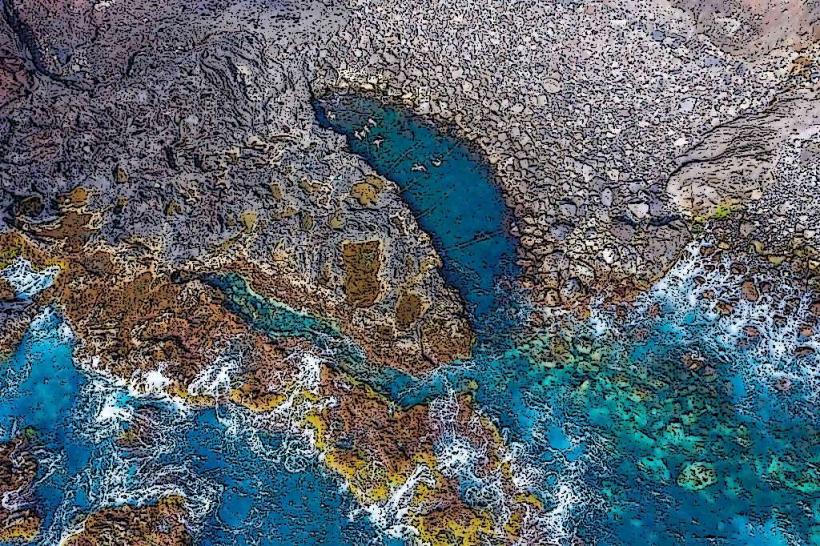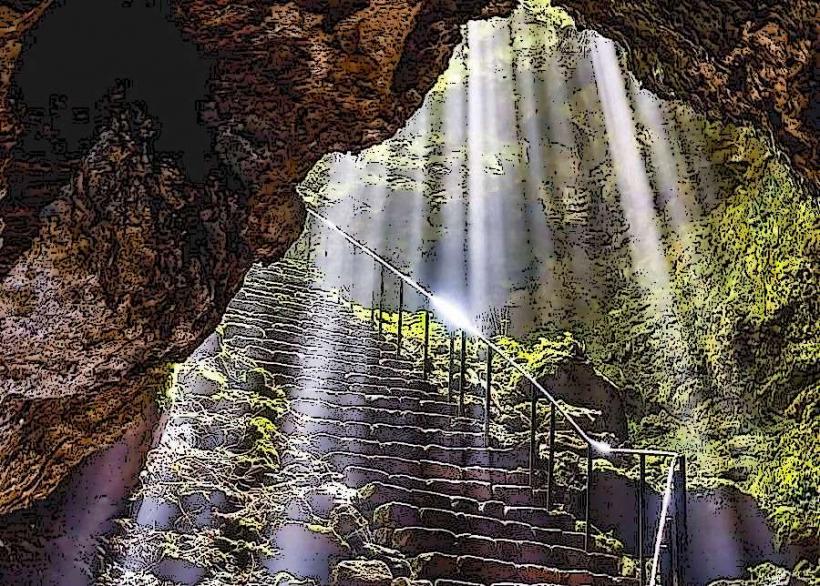Information
Landmark: Mount PicoCity: Azores
Country: Portugal
Continent: Europe
Mount Pico, located on Pico Island in the Azores, is the tallest mountain in Portugal and one of the most iconic natural landmarks of the archipelago. Rising 2,351 meters (7,713 feet) above sea level, Mount Pico is a dormant stratovolcano that dominates the island’s skyline and offers breathtaking views of the surrounding Atlantic Ocean and nearby islands. Its unique volcanic terrain, rich biodiversity, and impressive geological features make it a popular destination for hikers, nature enthusiasts, and anyone interested in exploring the natural beauty of the Azores.
1. Geology and Formation
- Stratovolcano Structure: Mount Pico is a stratovolcano, formed by layers of lava flows, ash, and other volcanic materials from successive eruptions. This type of volcano is known for its steep slopes and conical shape.
- Volcanic Origins: The volcanic activity that created Pico Island, and Mount Pico itself, began hundreds of thousands of years ago. The most recent eruptions occurred around 300 years ago, but the volcano has remained dormant since.
- Pico’s Summit: At the summit, a prominent volcanic crater, known as Pico Alto, crowns the mountain, with a smaller peak, called Piquinho or "Little Peak," at the very top. This peak often emits small fumaroles, which are openings in the Earth’s crust releasing steam and volcanic gases, indicating that while dormant, the volcano is not entirely inactive.
2. Flora and Fauna
- Vegetation Zones: The vegetation on Mount Pico varies with altitude, with lush forests, endemic shrubs, and hardy grasses found at different elevations. Lower slopes feature dense forests of native Azorean trees, such as junipers, heather, and laurel, while higher altitudes are mostly barren, with plants adapted to volcanic soil.
- Endemic Species: Pico’s slopes are home to several endemic plant species unique to the Azores, as well as mosses and lichens that thrive in the harsher conditions near the summit.
- Birdwatching: Mount Pico and the surrounding area offer excellent birdwatching opportunities. Species such as the Azorean wood pigeon and Cory's shearwater are commonly seen, especially in the surrounding forested areas.
3. Hiking Mount Pico
- Trail and Difficulty: The hike to the summit is challenging and is best suited for experienced hikers due to the steep incline and rough volcanic terrain. The main trail, called "Montanha do Pico Trail," begins at the mountain’s base near the Casa da Montanha (Mountain House), which serves as a visitor center and checkpoint for climbers.
- Elevation Gain: The hike covers approximately 1,100 meters (3,600 feet) of elevation gain over a distance of about 3.5 kilometers (2.2 miles) to the top, typically taking 6-8 hours round trip.
- Guides and Permits: While hiking independently is allowed, hiring a guide is recommended for safety, as the weather can change rapidly on the mountain. The Casa da Montanha also issues permits and provides information about trail conditions and safety precautions.
- Scenic Views: The hike offers stunning panoramic views of Pico Island’s volcanic landscapes, vineyards, and coastlines, as well as nearby islands like Faial and São Jorge. On clear days, hikers are rewarded with a sweeping vista of the Atlantic Ocean from the summit.
4. Casa da Montanha (Mountain House)
- Visitor Center: The Casa da Montanha, located at an elevation of about 1,200 meters (3,937 feet), serves as a base for hikers. It provides information on the hike, trail conditions, and safety guidelines. There are restroom facilities, a small snack bar, and spaces for resting.
- Safety and Registration: All hikers are required to register at the Casa da Montanha before starting their ascent and check back in upon their return. This helps ensure the safety of climbers, as weather conditions can be unpredictable.
- Equipment Rentals: The center offers equipment rentals, such as hiking poles, headlamps, and GPS devices, which can be useful for the often-steep and rocky terrain.
5. Weather Conditions
- Rapid Weather Changes: Due to its height and location in the middle of the Atlantic, Mount Pico experiences rapid and unpredictable weather changes. Clear skies can quickly turn into dense fog, rain, or high winds, especially near the summit.
- Optimal Hiking Seasons: The best time to hike Mount Pico is during the summer months (June to September), when weather conditions are more stable, and temperatures are milder. Even in summer, early morning hikes are recommended to avoid afternoon clouds that often form around the peak.
6. Unique Geological and Cultural Significance
- Lava Tubes and Caves: Pico Island features several lava tubes and caves, remnants of past volcanic activity. The largest is Gruta das Torres, a lava tube that stretches over 5 kilometers (3 miles), and is one of the longest lava tubes in Portugal. Visitors can explore parts of the cave, which contain unique lava formations and a variety of geological features.
- UNESCO World Heritage Vineyards: The island is also known for its UNESCO-listed vineyards, located on the lower slopes of Mount Pico. The traditional vineyards are built using lava stone walls that protect the grapevines from Atlantic winds and retain warmth, creating ideal conditions for viticulture in a volcanic environment.
- Azorean Wine: The Pico wines, particularly the white wines made from Verdelho grapes, are famous for their mineral-rich taste, influenced by the volcanic soil. A visit to Mount Pico often includes a wine-tasting tour through these vineyards, providing a cultural experience alongside the natural adventure.
7. Conservation and Preservation Efforts
- Biodiversity Conservation: Mount Pico is part of the Azores Geopark, recognized by UNESCO for its unique geological formations and efforts in preserving the region's biodiversity and geological heritage. Conservation efforts focus on maintaining the delicate ecosystem around the mountain and preventing soil erosion on the volcanic slopes.
- Sustainable Tourism: To preserve Mount Pico’s natural environment, visitor numbers are carefully monitored, and tourism is managed sustainably to limit the impact on native vegetation and wildlife. The Casa da Montanha plays a central role in promoting responsible hiking practices.
8. Legends and Cultural Connections
- Mythical Significance: Local folklore often describes Mount Pico as a mystical place. Some Azorean legends suggest that the mountain is a place of spiritual significance, where mythical creatures and spirits are said to reside.
- Cultural Symbol: Mount Pico holds a special place in the cultural identity of the Azores and Portugal. Its prominence has made it a source of pride and inspiration for the local people, and it appears frequently in Azorean art, poetry, and music as a symbol of strength and resilience.
Mount Pico is more than a mountain; it is a natural wonder that combines physical challenge, natural beauty, and cultural richness. Its impressive size, geological features, and breathtaking scenery make it a must-visit destination for anyone exploring the Azores, offering a blend of adventure, ecology, and Azorean heritage that is both unforgettable and awe-inspiring.

